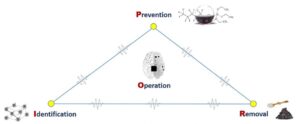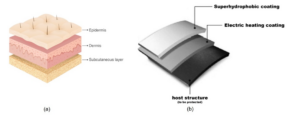This website uses cookies so that we can provide you with the best user experience possible. Cookie information is stored in your browser and performs functions such as recognising you when you return to our website and helping our team to understand which sections of the website you find most interesting and useful. More information in our Privacy Policy
ICELESS
ICELESS: Ice Control Enabled via a Low-Energy Smart System
Principal Investigator: Dott.ssa Mariarosa Raimondo
Start Date: 28/09/2023
Duration: 24 mesi
Total Funding: 213.082,40 € (CUP E53D23002620001)
Call: PRIN – PROGETTI DI RICERCA DI RILEVANTE INTERESSE NAZIONALE; cod. progetto P2022CZ5KZ
Role of CNR-ISSMC: Coordinatore
Coordinator: Dott.ssa Mariarosa Raimondo
Consortium: ISSMC-CNR (Dott.ssa Mariarosa Raimondo), Politecnico di Torino (Dott. Mauro Giorcelli), Università degli studi di Napoli Federico II (prof. Fabrizio Ricci e Dott. Leandro Maio)
The general objective of the ICELESS project is to define a novel approach for ice control, integrating various cutting-edge technologies (nanotechnology, smart materials, electronics, ultrasound, data processing) within a platform equipped with its own automation, in order to reduce energy demand and overcome the lack of application flexibility and adaptability of current solutions against icing phenomena. The innovative idea of the project is that ice formation and accumulation control can be broken down into a few main actions (prevention, identification, removal) and these can be achieved through a distributed transducer network with a flexible architecture (i.e., tunable to the specific application) and an operational control unit built around this network.

Specifically, this process allows capturing event flows (warnings), processing and locating them, sending/(re)distributing the appropriate actions across the entire transducer network with maximum efficiency and minimum energy consumption, enabling collective distributed coordination. This idea is realized by combining the use of liquid-super repellent and heating surfaces along with ultrasound, managed by distributed transducers acting as sensors or actuators or both. When these technologies come together, the main advantage is that ice protection is achieved with the lowest possible energy consumption. In detail, it is expected that nanostructured organic/inorganic hybrid coatings with static and dynamic superhydrophobicity, applied to the target surface, inhibit ice accumulation or weaken ice adhesion strength without any energy input (passive protection). The electric heating coating based on biochar allows efficient surface temperature control with energy savings. At the same time, ultrasound, benefiting from the synergy of passive and active protection, will contribute both to hinder frost formation and to detect or remove ice accumulation by inducing shear stresses at the ice-structure interface sufficient to enable detachment. To achieve this ambitious goal, the ICELESS consortium has brought together specialists from universities and research institutes with different but complementary backgrounds to address all aspects of the project. This is how the technologies conceived to address icing challenges and the necessary hardware/software solutions for their coordination are thoroughly investigated within ICELESS in strong interdisciplinary and multidisciplinary collaboration among partners.

